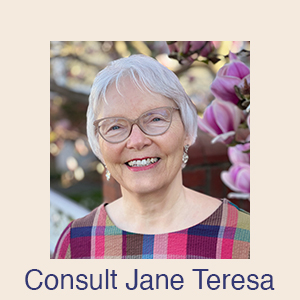Do you keep your dreams to yourself? Do you sometimes share them with a partner, friend, or dream therapist? Or do you share with an inner circle, a dream group, perhaps?
I received an email this week asking how to set up a dream group, a request that stirred my memories and took me back to the very early 1990s when I was writing my first book about dreams. Some of the people who had volunteered to take part in the research for that book suggested getting together to meet each other, and before long the get-togethers developed into a weekly dream group held in a bookshop on the Gold Coast.
The structure evolved organically to suit the needs and desires of the group, and soon attracted newcomers, so that we were, at times, rather a large group compared to more conventional dream groups where numbers are generally capped at eight or ten.
During the two years that I facilitated the dream group, I witnessed so much love, support, and compassion as the group shared and explored their dreams and discovered how they related to their lives. Friendships flourished outside the weekly meetings, and the community continued to thrive after I moved to Brisbane a couple of years later. One lovely summer day, the dream group decided to hire a bus and come up to Brisbane to take me out for a picnic in the Botanic Gardens. Yes, such was the size of this group that they filled a bus!
Dream groups are hugely varied in approach and format, but, at heart, they’re about meeting on a regular basis with a handful of other people to share dreams and seek insight through exploring their possible meanings together.
A quick Internet search will give you a range of different ways to organise and run dream groups. Most advise that the best approach is to give each dreamer space to tell their dream and then invite the other members to ask the dreamer questions about the dream, helping to clarify the dream and how the dreamer felt in the dream, and then to leave the dreamer free to draw their own conclusions, perhaps sharing these with the group, perhaps not.
Most dream group formats suggest meeting for two hours, weekly, two-weekly, or monthly, and perhaps for a finite term of, say, ten weeks, or six months. Two hours gives everyone in a small group time to share a dream, if they wish. Larger groups often operate a system where some members share dreams one session and others share theirs the next session.
Dream groups can be led or facilitated by a dream expert (a dream analyst, dream therapist, or dream worker), or organised more along the lines of a community meet, either with the same leader or with a different member taking the leader role each session.
The leader’s role is to ensure the group’s agreed guidelines are understood and followed, and to keep everyone on track. When a dream expert is leading or facilitating, an extra dimension can be introduced, since the expert can guide the group’s experiences through additional questions and subtle techniques and practices.
There are those who advise against setting up dream groups unless you are an expert in dream work, cautioning that it is dangerous to open up to the unconscious without professional guidance and support. While it is preferable for the leader to have a good foundation in dream work, though, I feel that as long as everyone is clear on the dream group’s guidelines, there is value to be gained in meeting and sharing dreams in a caring group environment. We should, after all, feel as comfortable as our long-ago ancestors did in talking about our dreams and inviting perspective through the eyes of the community. Whether or not we take that perspective on board is a personal decision, and one the community should value, but more often than not, such sharing helps us to both broaden and deepen our vision of ourselves, our life, and our options.
It’s wise to have recommendations on hand for those who feel they need professional assistance in working with emotions and issues raised through sharing a dream: contact details for dream therapists, therapists, or counsellors. Recommendations might take the form of a list of professionals included in the Dream Group Guidelines that each member receives before the dream group meets for the first time.
If you’re trained in dream work and you’re running your own dream group, you might consider offering private sessions for those who need extra assistance.
You might like to choose a book that each member reads and refers to, and perhaps open each session with a discussion of a method or chapter. (Of course I will recommend my book, The Dream Handbook, structured around exploring common dream themes and suggesting dream alchemy practices you can do.)
Once you’ve got your dream group underway, you could occasionally focus a session on a dream theme, like dreams of loss, or dreams of being blocked in some way, or dreams of death or birth. You might ask the members for their common dream themes and choose one that suits the majority.
Another resource you could use to ring the changes while helping and educating the group about dreams, is to choose an episode of The Dream Show with Jane Teresa Anderson (there are over 200 podcasts to choose from) featuring a guest exploring their dream with me. Ask the group to listen to the podcast before the session, and begin the meeting by discussing the dream interpretation. This is where Dream Group meets Book Club or Film Club perhaps!
You might also break routine now and then and introduce an invited dream expert to a session, to facilitate, to give a talk, or to answer questions.
If you need one method to consistently return to, I suggest looking at a dream as a metaphor or analogy for what’s going on in the dreamer’s waking life at a conscious or unconscious level. When the dreamer can relate the dream to waking life, they have a strong starting point for exploration and insight, especially when supported by a wise and loving group.
Finally, if you’re thinking of starting a dream group and you’re not trained in the art and science of working with dreams, you might like to do my self-paced online video-led course, How to interpret your dreams step-by-step. It will give you the added tools and resources you’ll find helpful.
I hope you’re inspired to share your dreams more, one way or another, and perhaps to take the plunge and start a dream group.
You might also enjoy



